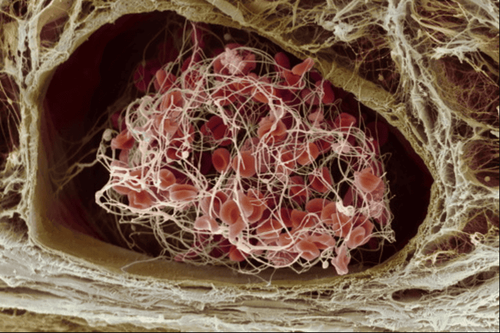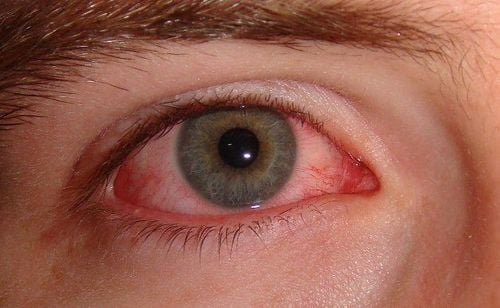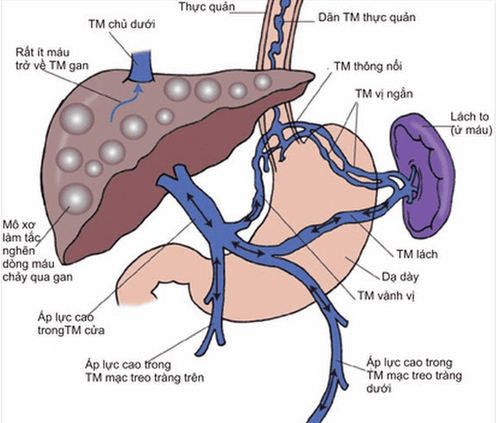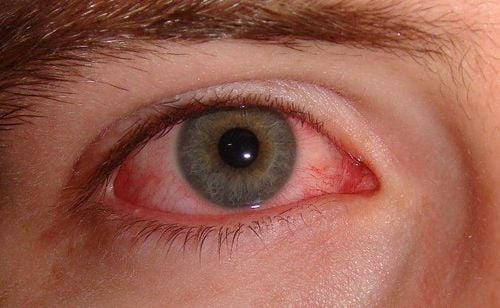This is an automatically translated article.
The article is professionally consulted by Master, Doctor Hoang Thanh Nga - Ophthalmologist - Department of Medical Examination and Internal Medicine - Vinmec Ha Long International General Hospital.
1. What is bleeding in the white of the eye?
Bleeding in the white of the eye is also known as a subconjunctival hemorrhage. The conjunctiva (or the white of the eye) contains many small nerve fibers and blood vessels. For some reason, these blood vessels burst, causing the white part of the eye to appear as a dark or light red patch. This is a subconjunctival hemorrhage.
Trắc nghiệm: Bận rộn có ảnh hưởng đến sức khỏe của bạn không?
Cuộc sống hiện đại khiến chúng ta vì quá bận rộn mà quên chăm sóc sức khỏe cho chính mình. Ai cũng biết rằng lịch trình làm việc cả ngày có thể khiến bạn kiệt sức, nhưng cụ thể bận rộn ảnh hưởng thế nào tới sức khỏe? Hãy cùng làm thử bài trắc nghiệm dưới đây.
2. Causes of bleeding in the whites of the eyes
Most cases of spontaneous subconjunctival hemorrhage have no specific cause. However, some causes are thought to lead to bleeding in the whites of the eyes such as:
Head trauma, eye injury Sneezing or coughing too forcefully High blood pressure Increased venous pressure in head eg when doing acrobatics Wearing contact lenses or rubbing your eyes too hard Viral or bacterial infections that weaken the blood vessel walls in the conjunctiva Congenital coagulopathy and similar conditions Certain diseases substances such as vitamin C, vitamin K, lack of clotting factor XIII Patient is taking some anticoagulant drugs such as Warfarine, Aspirin

3. Symptoms of bleeding in the whites of the eyes
Most people experience bleeding in the whites of the eyes without pain, but only accidentally discovered when looking in the mirror or seen by the other person.
When a subconjunctival hemorrhage occurs, you may feel a heaviness in the eye area or under the eyelids, or you may also feel a slight pressure around the eye. As the bleeding gradually disappears, you may feel a slight stinging in your eyes. However, there were no accompanying headache symptoms.
As the name suggests, the most obvious symptom of a subconjunctival hemorrhage is the appearance of a bright red patch in the sclera of the eye, even the entire white of the eye may be covered with blood.
Although it is called bleeding in the white of the eye, there will be no blood coming out of the eye, so even if you try to blot with tissue, there will be no blood on it.
Within the first 24 hours, the bleeding may be larger but then the size will gradually decrease as the blood is absorbed.

4. Is bleeding in the white of the eye dangerous?
Unlike skin wounds, blood in the whites of the eyes does not drip or flow, but only forms red patches when it enters the space between the sclera and the conjunctiva. The maximum amount of blood loss is only 2ml and is usually negligible. The bleeding area will gradually shrink and change color thanks to the natural blood loss process. The red patch turns green, then yellow and finally disappears in about 2 weeks.
Usually, the cases of bleeding under the conjunctiva are benign, not too dangerous and can go away on their own without the intervention of treatment measures, unless accompanied by trauma or inflammation. .
When you detect bleeding in the whites of your eyes, you absolutely should not rub your eyes, but need to prevent the bleeding from spreading by applying ice and compressing the eyes. Bleeding usually clears up after about 2 weeks.
If after 2 weeks, the condition does not show any signs of improvement, you should immediately go to specialized medical facilities for a more specific examination. In particular, you need to pay attention to go to the doctor soon if subconjunctival hemorrhage appears accompanied by different bleeding symptoms: nosebleed, bleeding gums,...

5. Treatments for bleeding in the whites of the eyes
As noted above, most subconjunctival hemorrhages are benign and do not require treatment. For mild cases of eye discomfort, over-the-counter artificial tears can be used.
The use of anticoagulants or aspirin for subconjunctival hemorrhage is not recommended. Anticoagulants need to be used according to the doctor's prescription to avoid causing dangerous complications. If you are currently using aspirin or anticoagulants and have bleeding in the whites of your eyes, you should immediately notify your doctor to receive advice and advice on whether to continue using the medicine or not.
If bleeding in the white of the eye is caused by trauma or trauma, the doctor will conduct treatments to speed up the healing process of the conjunctiva.
Antibiotic eye drops or ointments may be prescribed for subconjunctival hemorrhages due to external bacterial infections.
Thus, bleeding in the whites of the eyes, although not directly dangerous to the patient, can cause discomfort and affect daily activities. Therefore, it is extremely necessary to understand and grasp the methods of timely management of subconjunctival hemorrhage.
Customers can directly go to Vinmec Health system nationwide to visit or contact the hotline here for support.













